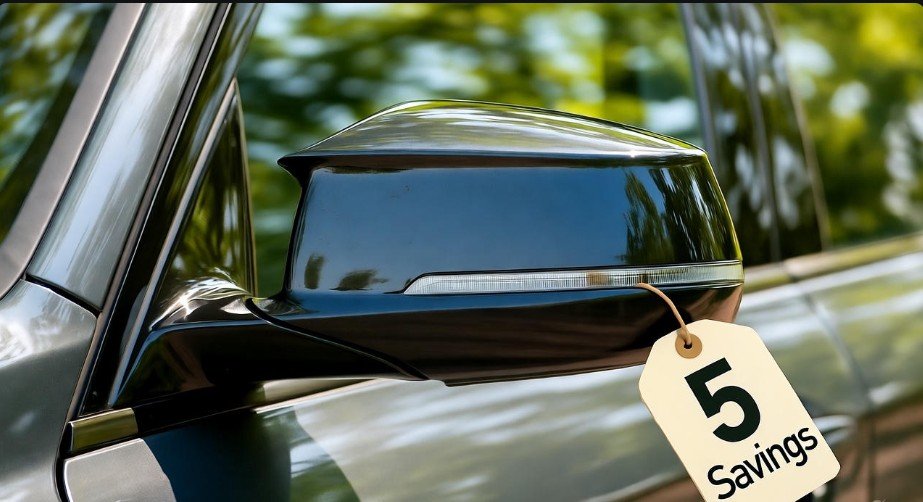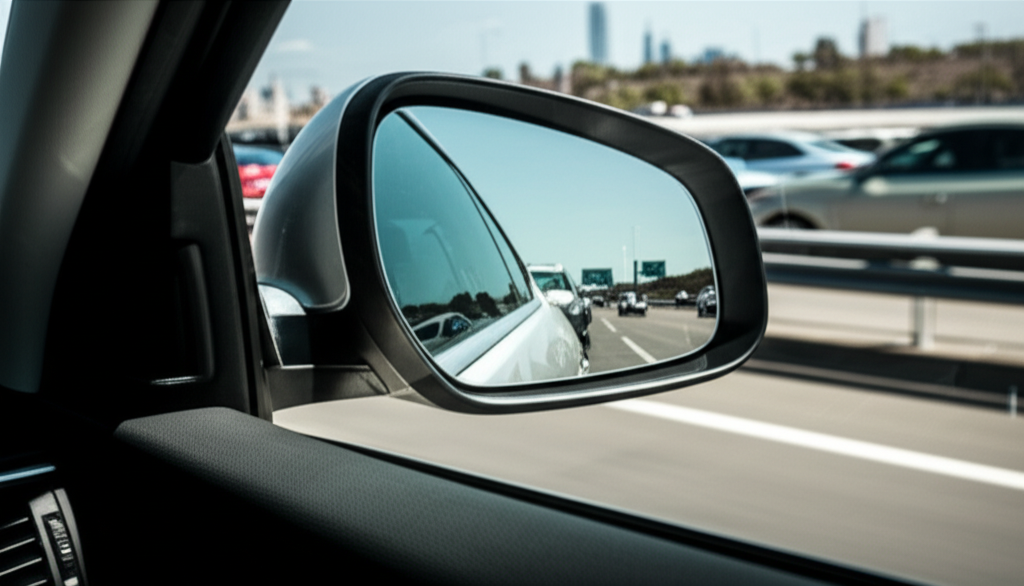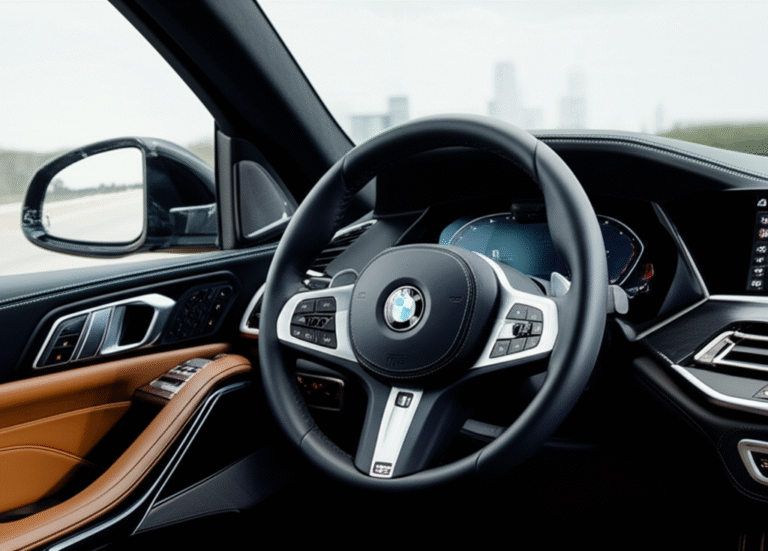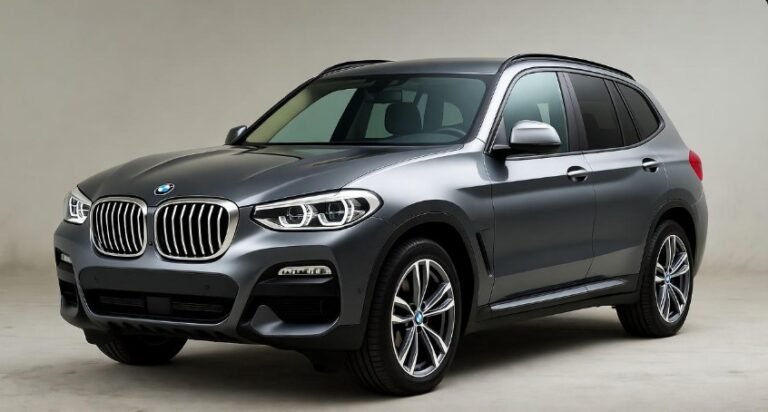BMW Side Mirror Price: 5 Savings

Looking for the best BMW side mirror price? You can save significantly by comparing OEM and aftermarket options, understanding part numbers, and exploring DIY installation, potentially saving hundreds on your BMW side mirror replacement.
In This Article
- 1 Key Takeaways
- 2 Understanding BMW Side Mirror Costs: What Influences the Price?
- 3 5 Ways to Save on Your BMW Side Mirror Price
- 3.1 1. The Part Number is Your Compass: Decode and Find the Right Fit
- 3.2 2. The Aftermarket Advantage: Quality Brands for Less
- 3.3 3. DIY Installation: Unleash Your Inner Mechanic
- 3.4 Pro Tip: Before you start any DIY work, consult a model-specific repair manual or a detailed YouTube tutorial for your exact BMW. This will save you headaches and potential damage.
- 3.5 4. Used and Salvaged Parts: The Eco-Friendly Savings Route
- 3.6 5. Feature Focus: Prioritize What You Actually Need
- 4 Price Comparison Table: BMW Side Mirror Options
- 5 When Is It Time to Replace Your BMW Side Mirror?
- 6 Frequently Asked Questions (FAQs)
- 6.1 Q1: What is the average BMW side mirror price for a 2018 5 Series?
- 6.2 Q2: Can I just replace the mirror glass, or do I need the whole assembly?
- 6.3 Q3: How do I know if my BMW side mirror is heated or auto-dimming?
- 6.4 Q4: Are aftermarket BMW side mirrors safe to use?
- 6.5 Q5: Where can I find the best deals on BMW side mirrors online?
- 6.6 Q6: How long does it take to replace a BMW side mirror?
- 7 Conclusion
Key Takeaways
- Compare OEM vs. aftermarket BMW side mirror prices.
- Identify the correct BMW side mirror part number.
- Consider DIY installation to cut labor costs.
- Explore used or salvaged BMW mirrors for savings.
- Check for heated or auto-dimming features to manage costs.
Your BMW is a masterpiece of engineering and luxury. When a side mirror needs replacement, knowing the BMW side mirror price is crucial. It can range from a few hundred to over a thousand dollars, depending on the model and features. This can feel daunting, especially if you weren’t expecting it. But don’t worry, we’re here to help you navigate the options and keep more money in your pocket. We’ll guide you through understanding the costs, finding the best deals, and making an informed decision. Get ready to drive away with peace of mind and a perfectly functioning side mirror without breaking the bank. Let’s dive into how you can save on your BMW side mirror price.
Understanding BMW Side Mirror Costs: What Influences the Price?

The price of a BMW side mirror isn’t a one-size-fits-all number. Several factors contribute to the final cost, and understanding these will empower you to make a smarter purchase. These components are intricate pieces of automotive technology, designed to enhance safety and complement your BMW’s sleek aesthetics. Knowing what you’re paying for helps avoid unexpected expenses.
Original Equipment Manufacturer (OEM) vs. Aftermarket Parts
This is often the biggest differentiator in BMW side mirror price. OEM parts are made by BMW or a company contracted by BMW to produce parts for their vehicles. They are designed to precisely fit your specific BMW model and meet all factory specifications. This ensures perfect functionality, durability, and compatibility. However, they come with a premium price tag.
Aftermarket parts, on the other hand, are manufactured by companies other than BMW. These can vary widely in quality. Some aftermarket mirrors are made to high standards and offer excellent value, closely matching OEM specifications. Others might be of lower quality, potentially affecting fit, finish, or longevity. When considering aftermarket, reputable brands often provide a good balance of cost and quality. Always research the brand and read reviews before purchasing.
Model and Year Specificity
BMW offers a wide range of models, from the sporty 2 Series to the luxurious 7 Series, and each has different mirror designs. Newer models often feature more advanced technology, such as integrated turn signals, heating elements, auto-dimming capabilities, and even blind-spot monitoring sensors. These advanced features significantly increase the BMW side mirror price compared to basic mirrors.
The year of your BMW also plays a role. Older models might have simpler mirror assemblies, making them less expensive. Conversely, newer models with complex integrated electronics will command higher prices due to the technology involved and the specificity of the parts required.
Features: Heated, Auto-Dimming, and More
The functionality of your side mirror can greatly impact its cost. Here’s a breakdown of common features and their typical price implications:
- Standard Mirror: The most basic option, usually just the glass and housing.
- Heated Mirror: Includes heating elements to de-fog or de-ice the glass, improving visibility in inclement weather. This adds a moderate cost.
- Auto-Dimming Mirror: Uses electrochromic technology to darken the mirror automatically at night when headlights are detected from behind, reducing glare. This is a more expensive feature.
- Power-Folding Mirrors: Allows the mirrors to fold in electronically, useful for tight parking spaces. These are typically found on higher-trim models and are pricier.
- Integrated Turn Signals/Cameras: Modern BMWs often have LED turn signals built into the mirror housing, and some may even include cameras for surround-view systems or blind-spot detection. These are the most expensive options.
Labor Costs for Installation
If you’re not replacing the mirror yourself, labor costs will be a significant part of the total BMW side mirror price. Dealerships generally have the highest labor rates, while independent European auto repair shops might offer more competitive pricing. The complexity of the installation also factors in; some mirrors are straightforward to replace, while others require extensive disassembly of door panels and intricate wiring connections.
A typical dealership labor charge can add anywhere from $200 to $600 or more, depending on the shop’s hourly rate and the estimated time for the replacement. Independent shops might charge $150 to $350 for labor.
5 Ways to Save on Your BMW Side Mirror Price
Now that you understand what drives the cost, let’s explore actionable strategies to reduce your BMW side mirror price. These tips are designed for every BMW owner, from those seeking the most budget-friendly solution to those who value quality and longevity.
1. The Part Number is Your Compass: Decode and Find the Right Fit
Every BMW part has a unique part number. This number is critical for ensuring you order the correct mirror for your specific vehicle. Using the wrong part number can lead to fitment issues, damage, and ultimately, more money spent. You can usually find the part number stamped on the back of the original mirror assembly or by using an online BMW parts catalog. Many reputable online auto parts retailers allow you to search by your BMW’s VIN (Vehicle Identification Number), which automatically filters for compatible parts. This guarantees you’re looking at options that will fit perfectly, avoiding costly mistakes. For example, a side mirror for a 2020 BMW 330i (G20 chassis) will be different from one for a 2015 BMW X5 (F15 chassis).
Where to find your part number:
- On the Old Mirror: Carefully inspect the back of the removed mirror assembly. The number is often etched or printed there.
- Owner’s Manual: While not always present, some manuals list key part numbers.
- BMW Dealership: Call your local BMW dealership’s parts department. Provide your VIN, and they can look up the exact OEM part number for your vehicle.
- Online VIN Decoders: Several websites use your VIN to identify your car’s exact specifications, including part numbers.
Example Part Numbers (Illustrative – always verify for your specific VIN):
| BMW Model (Approx. Year) | Potential Mirror Part Number (Example) | Key Features |
|---|---|---|
| 3 Series (G20, 2019+) | 6845009 | Heated, Auto-dimming, LED Turn Signal |
| X5 (F15, 2014-2018) | 51167285115 | Heated, Power Fold (Luxury Trim) |
| 5 Series (G30, 2017+) | 6845009 | Heated, Auto-dimming, LED Turn Signal |
Note: These are illustrative part numbers. Always confirm with your VIN for precise compatibility.
2. The Aftermarket Advantage: Quality Brands for Less
As mentioned earlier, aftermarket parts can offer significant savings. The key is to choose reputable brands that specialize in BMW or European auto parts. These brands often invest in research and development to match OEM quality and fitment. Websites like ECS Tuning, FCP Euro, and Pelican Parts are excellent resources for finding high-quality aftermarket BMW parts. They often provide detailed product descriptions, customer reviews, and compatibility checkers.
When comparing prices, you might find that an OEM mirror costs $500-$1000+, while a quality aftermarket mirror from a trusted brand could range from $150-$400. This is a substantial saving. Always check the warranty offered by the aftermarket manufacturer. A good warranty is a sign of confidence in their product’s durability.
Key considerations for aftermarket mirrors:
- Brand Reputation: Stick to well-known brands in the European automotive aftermarket.
- Material Quality: Look for mirrors made from durable plastics and high-quality glass.
- Feature Match: Ensure the aftermarket mirror has all the features of your original (heated, auto-dimming, etc.).
- Warranty: A longer warranty period generally indicates better quality.
3. DIY Installation: Unleash Your Inner Mechanic
Labor is a significant portion of the total BMW side mirror price. If you’re comfortable with basic automotive tasks, replacing a side mirror can be a surprisingly straightforward DIY project. Many modern BMWs are designed with modular components, making replacement relatively simple. You’ll typically need a set of trim removal tools and a Torx or Phillips head screwdriver set.
General Steps for DIY Installation (refer to model-specific guides for accuracy):
- Disconnect Battery: For safety, always disconnect the negative terminal of your car battery before starting any electrical work. Wait a few minutes for any residual charge to dissipate.
- Remove Door Panel Trim: Gently pry off the interior door panel trim. This usually involves removing screws hidden behind trim pieces or in the door handle recess, then carefully releasing clips with trim tools.
- Access the Mirror Assembly: Once the door panel is partially removed or detached, you’ll see the mirror assembly’s mounting bolts. Unscrew these.
- Disconnect Electrical Connectors: Carefully unplug the wiring harness connected to the mirror assembly. There’s usually a small tab to press to release the connector.
- Remove Old Mirror: Gently pull the old mirror assembly away from the door.
- Install New Mirror: Connect the electrical harness to the new mirror assembly. Mount the new mirror onto the door and secure it with the mounting bolts.
- Reassemble Door Panel: Reattach the door panel trim, ensuring all clips snap back into place and screws are tightened.
- Reconnect Battery: Reconnect the negative battery terminal.
- Test Functionality: Turn on your car and test all mirror functions (adjustment, heating, folding, turn signals, etc.).
For detailed instructions, YouTube is an invaluable resource. Search for “[Your BMW Model Year] side mirror replacement” and you’ll find numerous video guides demonstrating the process.
Tools you might need:
- Trim panel removal tool set
- Torx screwdriver set (e.g., T20, T25, T30)
- Phillips head screwdriver
- Socket wrench set (if bolts are used)
- Small container for screws
Pro Tip: Before you start any DIY work, consult a model-specific repair manual or a detailed YouTube tutorial for your exact BMW. This will save you headaches and potential damage.
4. Used and Salvaged Parts: The Eco-Friendly Savings Route
If budget is a major concern and you’re less worried about having a brand-new part, consider purchasing a used or salvaged BMW side mirror. Reputable salvage yards and online marketplaces like eBay or specialized BMW forums often have used parts available at a fraction of the new cost. These parts are typically removed from vehicles that have been in accidents or retired.
When buying used, inspect the part carefully for any damage (cracks, deep scratches, broken mounting points). Verify that all features (heating, auto-dimming, sensors) are functional. Many salvage yards offer a limited warranty on used parts, so inquire about that. This option is not only budget-friendly but also environmentally conscious, as it promotes recycling of automotive components.
Pros of Used Mirrors:
- Significantly lower cost.
- Environmentally friendly.
- Can be a perfect match (if from the same model/year).
Cons of Used Mirrors:
- May have cosmetic imperfections.
- Unknown history or remaining lifespan.
- Warranty can be limited or non-existent.
5. Feature Focus: Prioritize What You Actually Need
This might seem obvious, but it’s crucial: don’t pay for features you don’t need. If your original mirror didn’t have heating or auto-dimming, and you live in a climate where these aren’t essential, opt for a standard replacement. Similarly, if your car doesn’t have power-folding mirrors, don’t upgrade unless it’s a feature you truly desire and are willing to pay extra for, potentially including additional installation complexity.
Compare the BMW side mirror price for models with different feature sets. For instance, a basic heated mirror might cost $200-$300 less than an auto-dimming one with integrated cameras. If your primary need is a clear view and basic functionality, sticking to simpler options will yield the most savings. Always double-check which features your original mirror had before purchasing a replacement to avoid overspending or buying an incompatible part.
Price Comparison Table: BMW Side Mirror Options
To give you a clearer picture, here’s a generalized price comparison for a hypothetical BMW 3 Series sedan (e.g., 2019+ G20 chassis). Remember that actual prices will vary based on the seller, your location, and the exact model year and options.
| Mirror Type | Typical Price Range (Part Only) | Pros | Cons |
|---|---|---|---|
| Brand New OEM Mirror (Heated, Auto-Dimming, LED Turn Signal) | $600 – $1200+ | Perfect fit, highest quality, full features, warranty | Most expensive option |
| High-Quality Aftermarket Mirror (Heated, Auto-Dimming, LED Turn Signal) | $180 – $450 | Significant cost savings, good quality, functional | Fitment can be slightly off on rare occasions, warranty varies |
| Standard Aftermarket Mirror (Heated, Basic Glass) | $100 – $250 | Affordable, functional for basic needs | Lacks advanced features, quality can vary greatly |
| Used/Salvaged OEM Mirror (Features vary) | $75 – $300 | Very low cost, genuine part | May have cosmetic flaws, unknown lifespan, limited warranty |
Note: This table provides estimated ranges. Always get precise quotes for your specific vehicle.
When Is It Time to Replace Your BMW Side Mirror?
Several scenarios might necessitate a BMW side mirror replacement. Prompt action is essential for safety and to avoid further damage. Here are common indicators:
- Cracked or Broken Glass: Even a small crack compromises visibility and can lead to the glass falling out.
- Damaged Housing: A cracked or loose mirror housing can affect aerodynamics, allow water ingress, and make the mirror unstable.
- Malfunctioning Adjustment Motors: If your powered mirrors no longer adjust, it indicates an internal motor issue.
- Non-Functional Heating/Dimming: If your heated mirror doesn’t clear fog or your auto-dimming function is off, the internal components may be faulty.
- Impact Damage: After an accident or collision, even if damage isn’t immediately obvious, the mirror assembly might be compromised and need replacement for safety.
Driving with a damaged side mirror is not only unsafe but can also lead to fines from law enforcement. According to the U.S. Department of Transportation’s National Highway Traffic Safety Administration (NHTSA), proper visibility is paramount for safe driving. Ensuring your mirrors are in good condition is a legal requirement in all states.
Frequently Asked Questions (FAQs)
Q1: What is the average BMW side mirror price for a 2018 5 Series?
For a 2018 BMW 5 Series (G30 chassis), a brand-new OEM side mirror assembly with heating and auto-dimming features can range from $500 to $900. High-quality aftermarket options might be available for $150 to $350, and used parts could be found for $75 to $250.
Q2: Can I just replace the mirror glass, or do I need the whole assembly?
Often, you can replace just the mirror glass if it’s the only part that’s broken. This is usually a much cheaper and simpler repair. However, if the housing, motor, or turn signal is damaged, you’ll need to replace the entire assembly.
Q3: How do I know if my BMW side mirror is heated or auto-dimming?
Check your owner’s manual. For heated mirrors, there’s usually a symbol on the mirror glass (like a squiggly line or radiating lines) or a control within your car’s climate system. Auto-dimming mirrors often have a slightly darker tint and may have a small sensor or indicator light on the edge of the glass.
Q4: Are aftermarket BMW side mirrors safe to use?
Yes, safe and high-quality aftermarket BMW side mirrors are available from reputable manufacturers. They are designed to meet or exceed OEM specifications in terms of fit, function, and durability. It’s crucial to purchase from trusted brands and check reviews to ensure quality.
Q5: Where can I find the best deals on BMW side mirrors online?
Reputable online auto parts retailers like ECS Tuning, FCP Euro, Pelican Parts, and even large marketplaces like Amazon and eBay (from trusted sellers) are good places to start. Always compare prices across different platforms and ensure the part number is correct for your specific BMW model and year.
Q6: How long does it take to replace a BMW side mirror?
For a DIY replacement, it typically takes between 30 minutes to 2 hours, depending on your mechanical skill and the specific model’s complexity. A professional mechanic or dealership usually takes 1 to 1.5 hours of labor.
Conclusion
Replacing a BMW side mirror doesn’t have to be an exorbitant expense. By understanding the factors influencing the BMW side mirror price—from OEM versus aftermarket options to the specific features and model year—you are well-equipped to make a cost-effective choice. Whether you’re meticulously matching part numbers, opting for a trusted aftermarket brand, embracing the challenge of DIY installation, exploring the value of used parts, or simply prioritizing the features you truly need, there are clear pathways to significant savings. Remember, a functional side mirror is critical for your safety and compliance on the road. With the right information and a strategic approach, you can ensure your BMW remains in top condition without compromising your budget. Drive smart, drive safe!






